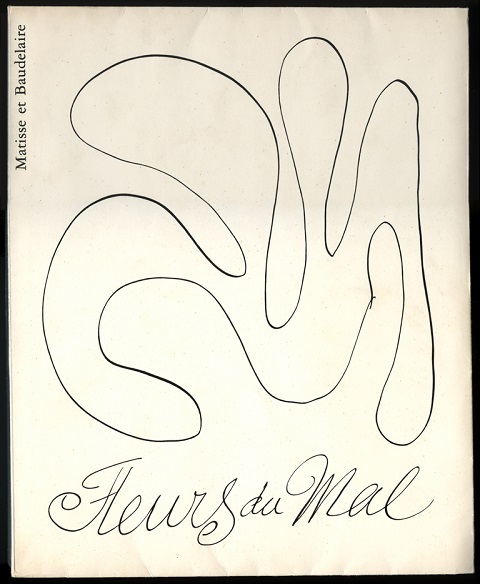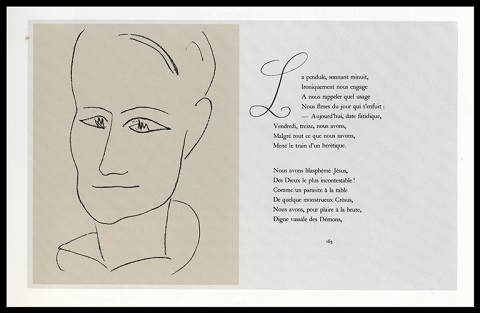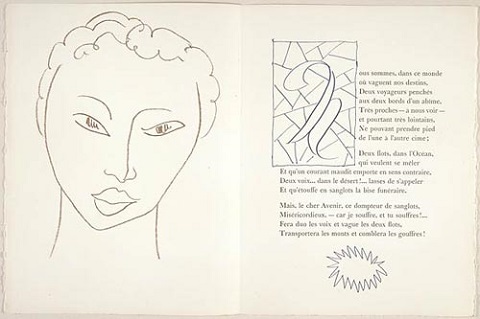
We previously featured Henri Matisse’s illustrations for a 1935 edition of James Joyce’s Ulysses. If the Odyssey-themed etchings he did for that book surprised you, have a look at his illustrations for Charles Baudelaire’s poetry collection Les Fleurs du mal, first published in 1857. According to Henri-Matisse.net, the book (available in French and English in our collection of 600 Free eBooks) had “been illustrated over the years by a variety of major artists, including Emile Bernard, Charles Despiau, Jacob Epstein, Gustave Rodin, Georges Rouault, and Pierre-Yes Trémois. Each interpreted selected poems more or less faithfully. Matisse took a different approach in the 1947 edition published by La Bibliothèque Française.” As you can see from the examples provided here, he went an even more unconventional route this time, accompanying Baudelaire’s poems with nothing but portraiture.

The edition’s 33 portraits, including one of Matisse himself and one of Baudelaire, capture a variety of subjects, mostly women — also a source of inspiration for the poet. However, as the site that bears his name makes clear, “Matisse did not indulge in the biographical fallacies of the literary critics of his day who attempted to understand Baudelaire by associating each poem with the woman who may have inspired it. Thus, his gallery of facial portraits provides an accompaniment rather than an imitative rendition of selected poems.” Would that more illustrators of literature follow his example and make a break from pure literalism, allowing the meaning of the relationship between text and image to cohere in the reader-viewer’s mind. You might say that Matisse pioneered, in other words, the most poetic possible method of illustrating poetry.

Since it is Banned Books Week, it’s perhaps worth noting that Baudelaire’s Les Fleurs du Mal was quickly censored in France. Yale’s Modernism Lab website notes that, two months after its publication in 1857, a French court “banned six of Baudelaire’s erotic poems, two of them on lesbian themes and the other four heterosexual but mildly sado-masochistic. The ban was not officially lifted until 1949, by which time Baudelaire had achieved ‘classic’ status as among the most important influences on modern literature in France and throughout Europe.” A second expurgated (or as Baudelaire called it “mutilated”) edition was published in 1861. Presumably Matisse illustrated that edition in 1947. If you want to buy one of the 300 copies with Matisse’s illustrations, you will have to shell out about $7500.
Related Content:
Henri Matisse Illustrates 1935 Edition of James Joyce’s Ulysses
Hear Gertrude Stein Read Works Inspired by Matisse, Picasso, and T.S. Eliot (1934)
Vintage Film: Watch Henri Matisse Sketch and Make His Famous Cut-Outs (1946)
Colin Marshall hosts and produces Notebook on Cities and Culture and writes essays on cities, language, Asia, and men’s style. He’s at work on a book about Los Angeles, A Los Angeles Primer. Follow him on Twitter at @colinmarshall or on Facebook.



Odilon Redon always gets left out of these types of things.
These illustrations are still wrong, even though they for once are not bad.
He does, doesn’t he? And he did cross my mind as eminently more suitable.